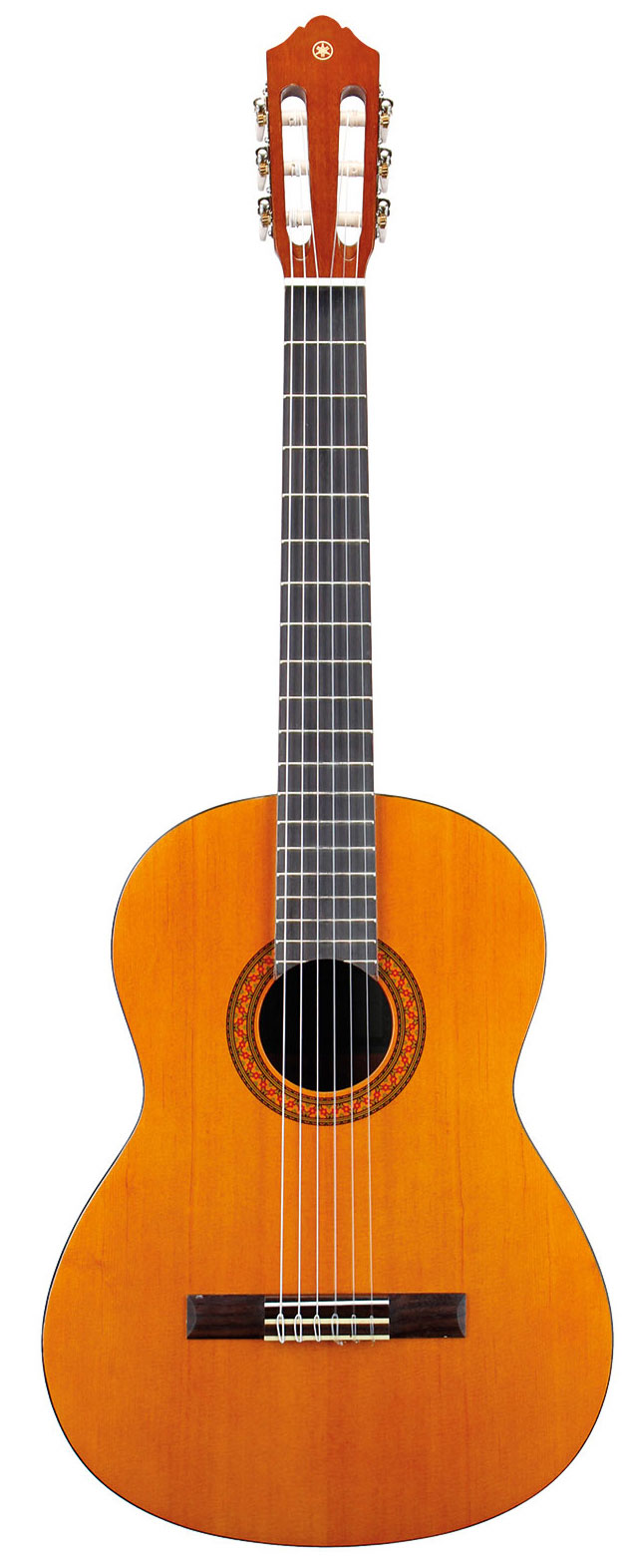THE CLASSIC REFERENCE
The mere mention of this reference fully reflects Yamaha's philosophy!
The C40 is not just a simple student model; it is above all the instrument on which several hundred thousand guitarists have started playing for nearly three decades. Its design is based on a simple idea: to offer a reliable instrument with excellent intonation to as many people as possible at a very accessible price! The promise is to provide beginners with the best possible playing experience to help them start and progress quickly.
The C40 III is still highly praised by teachers who confidently recommend this essential model. This guitar offers all the hallmarks of meticulous craftsmanship with its spruce top, meranti back and sides, and rosewood fingerboard and bridge.
It?s no surprise that the C40 III can claim the title of the best-selling classical guitar in the world! A limited budget no longer means a second-rate guitar, as brilliantly demonstrated by the C40 III. The spruce top, meranti back and sides (a wood species similar to mahogany), and rosewood fingerboard and bridge are the major assets of this affordable model, delivering a sound and playing comfort rarely found in this price range.
The C40 III is equipped with chrome tuning machines. Yamaha?s classical guitar range benefits from the company?s extensive expertise in nylon-string guitar manufacturing. The use of high-quality materials and the active involvement of experienced luthiers ensure guitars that, without exception, offer exceptional performance at affordable prices.
A true ?best-seller,? the Yamaha C40 classical guitar notably won the title of ?Best String Instrument? at the 2011 Music Industry Awards (MIA) ceremony in London, which brought together major players in the music industry. The public also voted for the Yamaha C40 in a special poll organized by Classic FM radio station.
Key Features
- The Classic Reference
- Recommended by teachers
- Yamaha Classical body shape
- Spruce top
- Yamaha quality on a budget
Yamaha C40II Specifications:
- Top: Spruce
- Back and sides: Meranti
- Neck: Nato
- Nut width: 52mm
- Fingerboard: Rosewood
- Bridge: Rosewood
- Scale length: 650 mm
- Tuning machines: Chrome
- Finish: Natural
- Varnish: Gloss
- Body depth: 94 - 100 mm
- Made in: Indonesia
- Weight: 2.6Kg
What strings do classical guitars use?
While
classical guitar strings have a nylon core with the bass strings wrapped in metal wire, strings on other acoustic and electric models are made entirely of metal. This results in a different sound and playing feel.
What does the 4/4 size mean?
Various sizes exist depending on needs:- 4/4 size; (adult from about 1.60m)
- 7/8 size, also called Señorita: a guitar for older children aged 10-12 years, about 1.50m tall. This size is popular among many women looking for a slightly smaller guitar than the 4/4.
- 3/4 size, also called Cadette: for children around 1.40m (10 years old)
- 1/2 size, also called Requinto: for children around 1.30m (7 years old)
- 1/4 size: for children around 1.20m (6 years old)
- 1/8 size: the guitar for very young children, between 3 and 5 years old, for heights between 1m and 1.10m.
What are the differences between classical and acoustic guitars?
The differences are numerous in terms of sound, size, dimensions, and even construction. It is important to note that the classical guitar, also called the Spanish guitar, is traditionally the preferred instrument for beginners. Indeed, its wide neck allows for greater string spacing, making finger placement easier. Nylon strings, with their lower tension and softer feel, are less aggressive on inexperienced fingers, and the warm, round sound of the classical guitar appeals to many.
Cases and Accessories:
- It is important to protect your instrument; you will find a wide selection of cases and gig bags on our site.
- You can also find learning methods to help you start this adventure.
- Don?t forget your tuner to always stay in tune. A guitar is traditionally tuned E, A, D, G, B, E from the lowest (top) to the highest strings. Tuners usually display notes in the Anglo-Saxon system (E, A, D, G, B, E), but Woodbrass has thought of those who prefer the French notation with this tuner.
- To complete your setup, consider a stand and footrest to store your instrument and maintain the ideal playing posture.
- There are also specific straps available for playing standing up.
Other models and packs:
Test and demo:
Find a demonstration video at the bottom of this page or by
clicking here. en
en 










































































